TOPICS 2020-2021
2022-06-08 IN TOPICS
8/November/2021
“Essentiality Evaluation of SEP Declared 5G Patents (3rd division)” by Cyber Creative Institute CO., Ltd. Results Available for Purchase
– Estimated authentically essential 5G patents Ranking fluctuates greatly –
Cyber Creative Institute Co., Ltd. (“Cyber Creative Institute”, headquarters: Shinagawa, Tokyo, president: Hirohiko Sato), a research and analysis consultant on mobile-wireless and other ICT technologies conducted a patent essentiality evaluation for the 5G essential patents declared by ICT companies to ETSI (declared 5G-SEPs1) for estimation of the essential 5G-Patents holdings. This estimation is the third report followed to October 2020 and April 2021.
As a company in principle can declare what they consider as 5G essential patents to a standardization organization (e.g. ETSI), these declared 5G-SEPs may include the ones not objectively essential to the 5G Standard. Therefore, simple counting of the declared 5G-SEPs has not been enough to understand the real strength of the major SEP owners.
In conducting essentiality evaluation on declared 5G-SEPs, we aim at our evaluation to estimate the total number and per-company holdings of authentically essential 5G patents.
We evaluated 2,166 granted patents that are equivalent to approximately 10 % of the 5G-SEPs declared for the standards. The result shows that the essentiality ratio [1] is 33% on average, and that is about the same as 32% of the previous report. The order of higher essentiality ratio is KT Group (83.3%), NTT DOCOMO (72.9%), Sony (72.7%), Fujitsu (70.0%) and ETRI (66.7%).With this evaluation, we estimate the total number of authentically essential 5G patents (“authentic 5G-SEPs”) is about 13,600 in multiplying the total number of 5G-SEP declarations by the essentiality ratio. This is an increase of about 4,600 from the previous report. [1] Essentiality ratio: the numbers of the patents that match the 5G Standards over the evaluation target SEPs declared to ETSI.According to our estimation, the top 10 companies who own authentic 5G-SEPs are LG (10.3%), Samsung (10.1%), Qualcomm (9.9%), NTT DOCOMO (9.4%), ZTE (8.2%), Huawei (7.8%), Nokia (including ALU) (7.1%), Ericsson (4.6%), CATT (3.6%) and Sharp (2.9%).
Among them, LG has risen significantly from 7th place in the previous report. In addition, the number of declared companies is increasing, and the share of top companies is decreasing relatively. This patent essentiality evaluation result is available for purchase.
(1)Purposes and Background of the Evaluation
In the latest 5G-SEP analysis, about 41,000 5G-SEPs were declared
Some patents declared by companies include those that do not appear to be essential when judged objectively. The number of declared 5G-patents, therefore, does not reflect the real strength of each patent holders.
On the other hand, an essentiality evaluation of the entire declared patents is not practical as it costs a lot of money and time for the huge amount of declared patents.
In view of this as a practical approach, we selected a sampling approach instead of an exhaustive survey, by picking out a certain percentage of the declared and granted patents, obtaining an essential patent ratio and correcting the declared data. This approach is intended to ensure both objectivity and effectiveness of evaluation.
We sampled approximately 10% of the declared and granted patents as the target of the essentiality evaluation. It enabled us to estimate the total number of authentic 5G-SEPs and the per-company holdings.
- The standards selected by 3GPP as 5G standards are regarded as the core standards.
-
Among the declared 5G-SEP, patents that are subject to declaration for the core standards are the patent population.
Total number of families in the patent population: 40,703
Number of families including granted patents among the above: 20,825 - The core standards are the 5G Radio Access standards (TS 38 series) and the Network Slicing standards (TS 23.501 to TS 23.503)which constitute important elements in the 5G architecture standards.
(2)Methodology for Analysis
A)Setting Patents Population for Essentiality Evaluation
- We select granted patents for essentiality evaluation from the patent families including granted patents within the patent population.
- We impartially selected 10 % of the granted patents in each company, in the order of earlier granted dates until it reached the target number.
- If there are multiple granted patents in one family, a granted patent with the least limitation and seemingly broadest scope of rights of an independent claim will be selected for evaluation.
B)Selection of Patents
- We evaluate one patent per family based on the above independent claim.
- In principle, we use ETSI declared standards for the comparison analysis.
- We use only core standards for the comparison analysis even when searching for standards outside the declarations. (i.e., No patent is evaluated as essential even if it matches any TS 36 series or TR.)
C)Method to Evaluate the Essentiality Ratio
- Two evaluators who are familiar with both standards and SEP will evaluate in two stages.
- The primary evaluator evaluates a patent according to the item B), and classifies its essentiality described on the item C).
- The secondary evaluator checks the result of the evaluation by the primary evaluator and checks the B evaluation with particular care.
- If the evaluation results are different each other, the secondary evaluator sends it back with a reason and finally adjust so that the views of both the primary and secondary evaluators are the same.
(3)Evaluation Procedure
A)Double check system
- Target standards and clauses
- Grounds for evaluation
- Points of inventions
B)Evaluation Details
- A: The invention matches a standard.
- B: Part of elements of the invention matches a standard.
- C: The invention doesn’t match a standard.
Only the patent with the A evaluation is classified as an authentic 5G-SEP.
C)Essentiality Evaluation
(4)Results of Essentiality Evaluation
We selected 2,166 granted patents for the essentiality evaluation from 20,825 declared and granted patents, which is equivalent to 10.4% of the entire declared and granted patents. The number of the selected patents increases about 850 more than the previous report.
The number of companies who made declarations is 98. Among them, for a per-company evaluation we select 27 companies who hold 100 or more granted patents each (10 or more patents evaluated).
The results of essentiality evaluation are given in Figure 1.
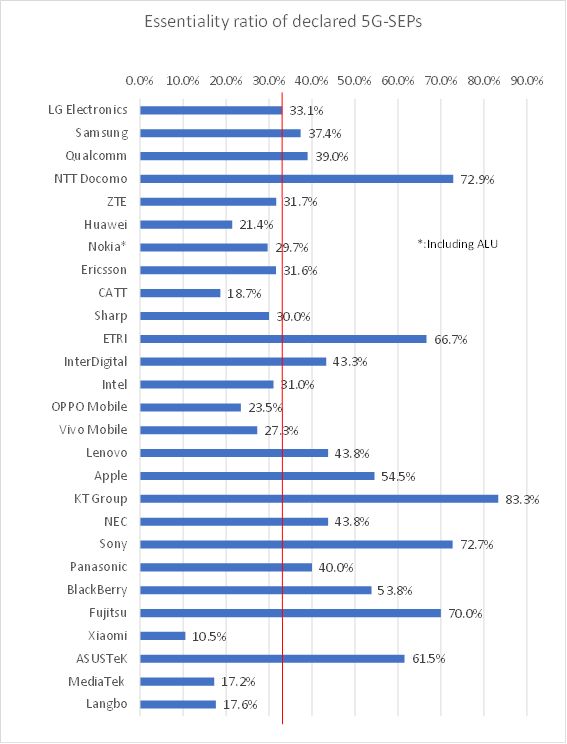
Figure 1 Essentiality ratio of declared 5G-SEPs
The average essentiality ratio is 33 % as shown by the red line.
The companies with higher essentiality ratio are KT Group (83.3%), NTT DOCOMO (72.9%), Sony (72.7%), Fujitsu (70.0%) and ETRI (66.7%). By nationality, Japanese, US, and Korean companies have higher essentiality ratio.
Among Japanese companies, those with higher essentiality rates more than the average are NTT DOCOMO, Sony, Fujitsu, NEC, and Panasonic.
(5)Number of Authentic 5G-SEPs Estimated and Their Owners
The estimated number of authentically essential 5G-SEPs in total is approximately 13,600 by applying the essentiality ratio to the patent population (40,703 families). The names of the top-ranking companies who are estimated to hold authentically essential 5G-SEPs and their shares are shown in Figure 2.
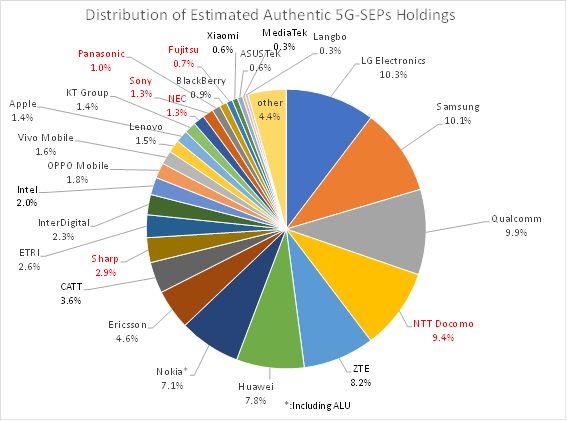
Figure 2 Distribution of Estimated Authentic 5G-SEPs Holdings
The top 10 companies who are estimated to own authentic 5G-SEPs are LG (10.3%), Samsung (10.1%), Qualcomm (9.9%), NTT DOCOMO (9.4%), ZTE (8.2%), Huawei (7.8%), Nokia (including ALU) (7.1%), Ericsson (4.6%), CATT (3.6%) and Sharp (2.9%)
LG has risen significantly from 7th place (6.3%) in the previous report to 1st place (10.3%). This is the result of many SEP declarations.
Also, overall, the market share of top companies is declining relatively.
Japanese companies such as NTT DOCOMO ranks 4th and sharp 10th.
In this way, the activities of the 5G-SEP Declaration are underway, and since these trends will give us a glimpse of the strategies of each company, we plan to continue our investigations in the future.
2/April/2021
Press Release:Cyber Creative Institute Analyzes the Number and New Trend of 5G Patents held by the World’s Major Players
Sales Started for 5G Patent Search Report (3rd edition) and Corresponding Patent List
Cyber Creative Institute Co., Ltd. (Head office: Shinagawa-ku, Tokyo, President: Hirohiko Sato), comprehensive research company for ICT technologies including mobile and wireless, has evaluated and analyzed the development trends of major companies, technologies and services for 3GPP 5G standard essential patents (5G-SEP). The following is a summary of the analysis.
In this research report, we have updated the “Actual 5G-SEP Holding Status” under the latest data, using the 5G standard essential patent declarations by the world’s major players that were announced on October 12th, 2020. The report also examines the latest trends in the number of 5G standardization contributions (i.e., the number of technology contributions) from major worldwide players and analyzes the correlation between the 5G-SEP holdings and the number of contributions. This report also examines how the trend of contributions changes as the subject matter for 5G standardization shifts from Rel-15 to Rel-16. In addition, it includes the patent application trends of each technology category for 5G, such as automotive and IoT.
In examining the 5G-SEP ownership status, as in the previous release, we conducted a sampling check for the standard compliance of the SEP declared patents to 3GPP 5G Standard and estimated the number of real 5G-SEP holdings by major companies. In terms of the number of real 5G-SEP holdings, Samsung (South Korea), Qualcomm (U.S.), and NTT DOCOMO (Japan) ranked first, second and third, respectively, with a share of over 10% (Figure 2). By nationality, the top 10 companies are closely matched: two from Japan (+Sharp), one from the U.S., two from Europe (Nokia, Ericsson), three from China (Huawei, ZTE, CATT), and two from Korea (+LG).
The correlation between the number of 5G-SEPs and the number of contributions shows that the world’s major players are divided into two groups: those with a good balance between the number of contributions and the number of 5G-SEP holdings and those with a very high number of contributions compared to the number of 5G-SEP holdings (Figure 4). On average, one 5G-SEP comes from every 30 proposals.
The patent application trends for each technology category of 5G has a unique characteristic where the number of applications for 5G essential patents for V2X (automotive), D2D (IoT), and unlicensed operation increased significantly. This trend can also be observed in the increasing number of 3GPP SA meetings where service and architecture specifications are discussed.
In addition to the sales of the search report in the third edition, we will also offer a patent group list under the forecast of various trends. It is intended to support readers to check patent details efficiently and concretely with the focus on target categories such as companies and technology categories.
Key points of the survey results
(1)Estimated number of 5G-SEP holdings[1],
SEP may be declared by each company at its own discretion. For this reason, the declared 5G-SEPs are not necessarily essential to the 5G standard. In addition, there are two types of 5G-SEP selections: one is ETSI based 5G compliance assessment which includes the LTE technologies, and the other is 3GPP based 5G compliance assessment. Furthermore, the specifications of the 5G radio system have significantly been enhanced to achieve new functionalities compared to LTE, such as ultra-low latency and massive terminal connections.
With the above background into consideration, in this study, 1,297 patents (more than 320 patents from the previous study) were selected from the declared SEPs that meet the 3GPP 5G standard, maintaining fairness among companies and conducting comparison evaluations between the declared standard specifications and the patent claims. Thus, the compliant patents were selected as the standard compliant patents.
The 5G standards compliance rate for each company is shown in Figure 1.
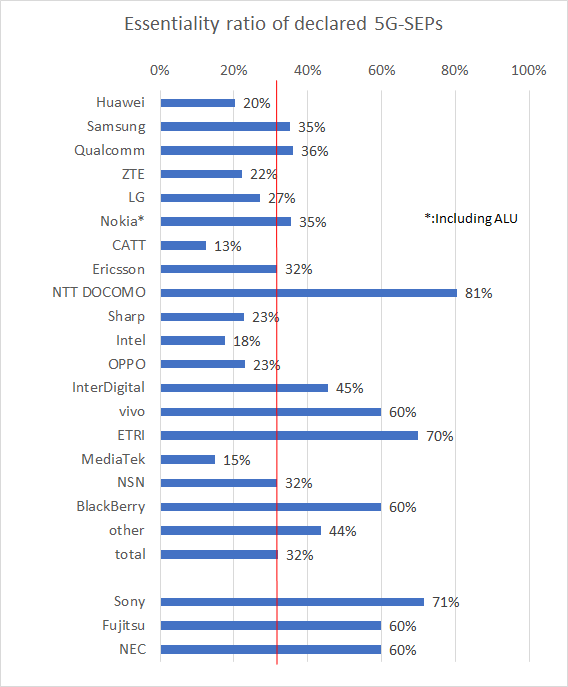
Figure 1 5G standards compliant rate
Eighteen companies from Huawei to BlackBerry have more than one hundred declared SEPs for the 3GPP 5G Standard as of the timing of the survey.
[1] Estimated number of 5G-SEPs held: Only 5G-SEPs that fall under the definition of 5G in 3GPP are counted.
About 10% of the SEP declared patents are randomly selected, and the claims of the patents are compared with the 5G Standard. The patents that match perfectly are defined as compliant patents, and the total number of patents for each company divided by the number of patents surveyed for each company is defined as the 5G Standard compliance rate.
The overall compliance rate is 32%, unchanged from the previous survey (October 2020).
The 5G Standards compliance rate is multiplied by the number of patents declared as 3GPP 5G-SEPs by each company, and the actual number of 5G-SEP holdings (hereinafter referred to as the estimated number of 5G-SEP holdings) is shown in the Figure 2. The results are as described in the preface.
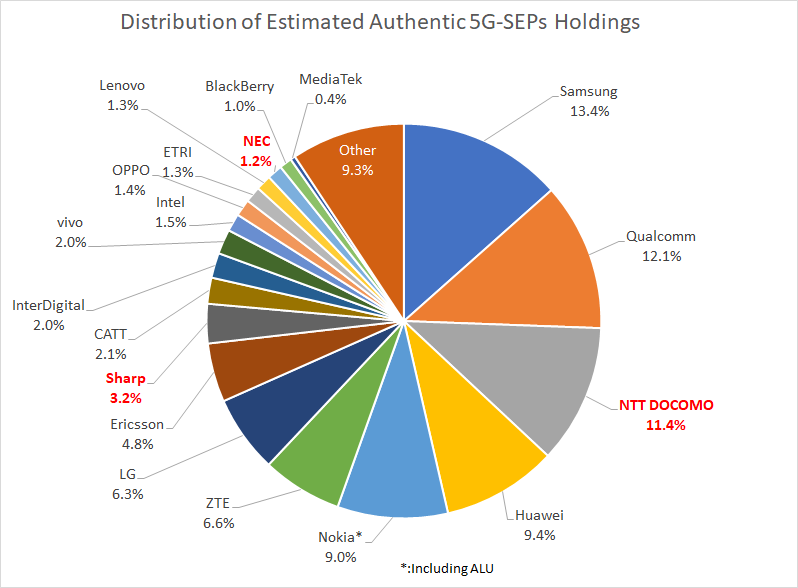
Figure 2 Estimated real 5G-SEP holdings (estimated 5G-SEPs holdings)
(2) Correlation between the estimated number of 5G-SEPs held and the number of standardization contributions
The number of standardization contributions for 5G is approximately 240,000 for Rel-15 and Rel-16 (Fig. 3).
In Rel-16, the number of contributions to SA is about 1.5 times more than that in Rel-15. This result reflects the fact that the framework of the standardization of the wireless section was almost completed in Rel-15, and that the standardization phase of the wireless section together with the upper layers work is now underway.
The correlation between the number of standardization contributions and the estimated number of 5G-SEPs held by each company is shown in the figure 4. On average, there is one estimated 5G-SEP per every 30 proposals.
In addition to Samsung, Qualcomm and NTT DOCOMO, which rank first to third in the estimated number of 5G-SEP holdings, Nokia, ZTE, and LG have relatively balanced proposals and SEP applications. In contrast, Huawai and Ericsson have a larger number of contributions, with more than 60 contributions per SEP application, double the average.
The companies with the largest number of 5G standardization contributions are shown in the Figure 5.
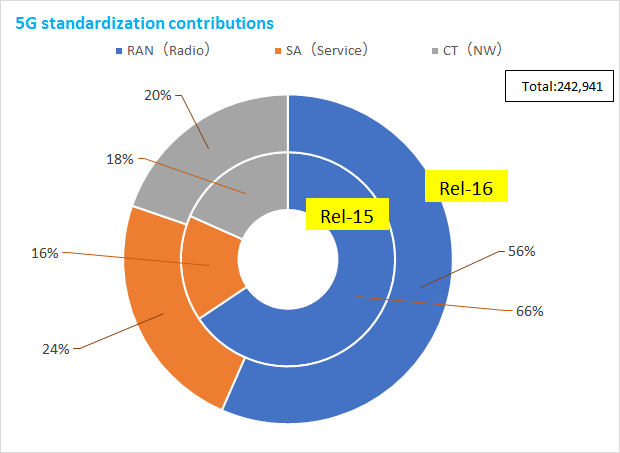
Fig. 3 Ratio of proposals for 5G standardization (per Rel category, per meeting)
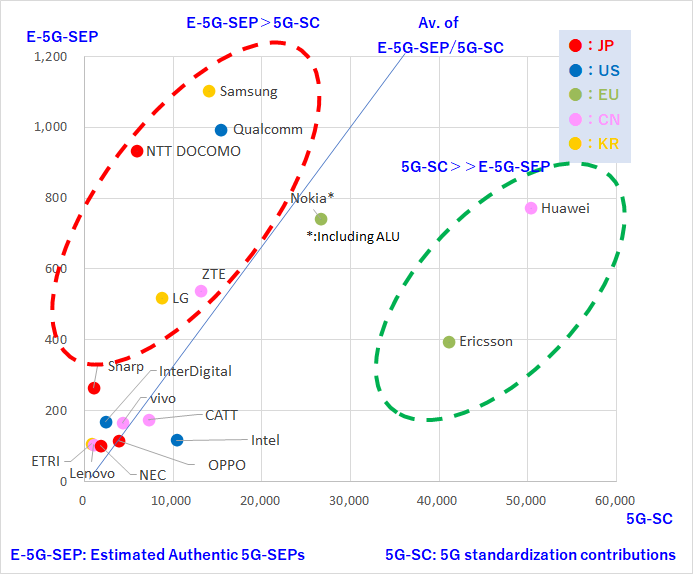
Figure 4 Correlation between the number of 5G standardization contributions and the estimated number of 5G-SEP holdings
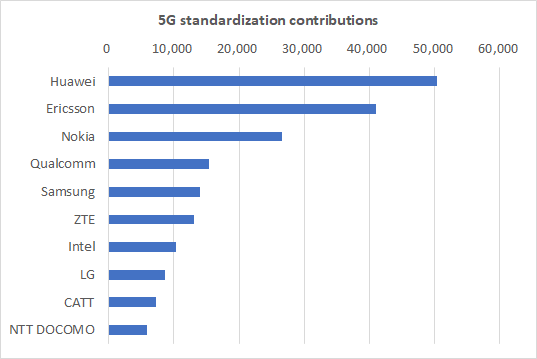
Figure 5 Top 10 5G Standardization Contributions
(3) Technology categories with more patent applications
In the 5G essential patent analysis[2], the technology categories with increased patent applications over the last survey is shown in the Figure 6.
D2D is a technology category that is expected to be used in IoT and V2X is for automotives, both of which are likely to be used in different industries from telecommunications. Unlicensed operation enables operation using frequencies in the unlicensed band, which can contribute to the flexible operation of 5G.
After extracted by searching and confirmed by wireless technology experts as 5G compliant, 26,000 patents were selected as 5G essential from 15 important technical areas for 5G.
[2] 5G Essential Patents: In this research report, we call patents that are necessary to realize 5G as “5G Essential Patents.” These are patents that are determined as necessary after searching the technological keywords to realize 5G and confirmed by radio technology specialists as compliant to the aiming 5G technologies. They include 5G implementation patents besides 5G-SEP.
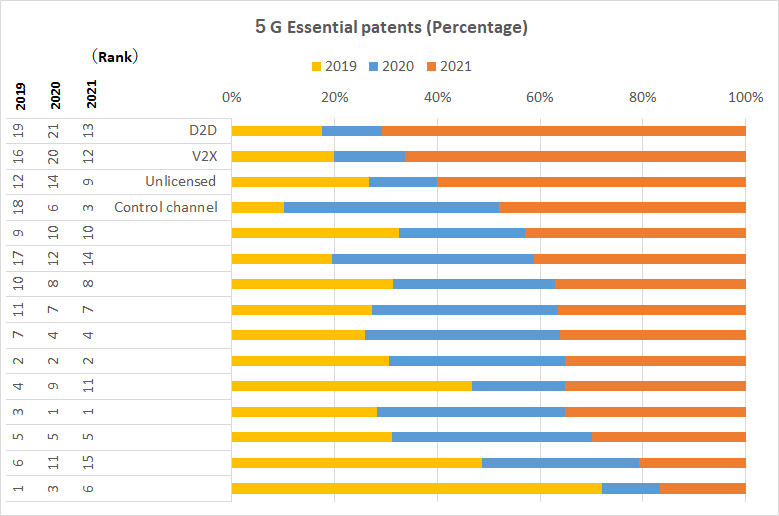
Figure 6 Sharply increased 5G technology categories in this survey
The table of contents for the research report is listed in the following link;
http://cybersoken.com/research/5G,5G-SEP.html
Outline of survey targets
(1) 5G-SEP declared patents
Surveyed : ETSI’s SEP List https://www.etsi.org/deliver/etsi_sr/000300_000399/000314/
Unit of analysis: INPADOC family base
Surveyed list acquisition period : November 2020 publication
(2) 5G Essential Patents
Search Target: Patents that are assessed as essential for 5G implementations, extracted from the patents in 15 technology areas for 5G using the search system: Derwent Innovation
Patents searched: worldwide patent gazettes
Unit of analysis: INPADOC family base
Survey period: January 1, 2013 to June 30, 2020 (Added one year portion from the second edition)
(3) 5G standardization contribution
Survey target: Number of proposed contributions to 3GPP meetings
Surveyed contributions: 3GPP’s website: https://www.3gpp.org/specifications-groups/specifications-groups
Unit of analysis: by contribution
Surveyed list acquisition period : Rel-15: March 2016 to September 2019; Rel-16: December 2017 to December 2020.
- Research Reports: Overall Trend Survey, Trend Survey by Technology Category, Application Trend Survey of Notable Companies, etc.
- List of 5G essential patent registration number: List of patents by technology category, applicant, or other specified criteria (optionally, summary of a patent, with or without ETSI declaration etc.)
- Evaluation list of 5G-SEP declared patents
- Please inquire us for other individual requirements.
Service provision
In this third edition of the survey, we offer the following subordinate services.
Corporate Profile
(1) Company name: Cyber Creative Institute Co., Ltd. (http://www.cybersoken.com)
(2) Representative: Hirohiko Sato, President and CEO
(3) Location of head office: 5F Gotanda First Building, 2-8-1 Nishi-Gotanda, Shinagawa, Tokyo
(4) Company foundation: April 2001
(5) Main businesses: The following businesses related to information and telecommunications
1. Survey and research
2. Patent service
3. Engineering
4. Education and training
(6) Paid-in capital: 30 million yen
For inquiries to this release, please contact:
Cyber Creative Institute Co., Ltd.
Patent Search and Analysis Department 5G Essential Declared Patent Search Team
Attn: Kenji Nakanishi
Tel : +81-3-3490-3186
Email: IPR_contacts@cybersoken.com
12/October/2020
We conducted a patent essentiality assessment of 5G standard essential patents declared by ICT companies to ETSI (declared 5G-SEPs1) to know the ownership status of essential 5G patents.Since the declaration of 5G-SEPs to the standardization organizations is made based on each company’s self-assessment, some patents that are not objectively essential to the 5G standard are declared as 5G-SEPs. Therefore, simply comparing the number of patents declared as 5G-SEPs does not reveal the true strength of the major companies.The results of the consistency evaluation show that the average consistency rate is 32%, with NTT DOCOMO (81%), InterDigital (48%), and Qualcomm (45%) in the order of highest consistency rate.Using this figure, the total estimated number of real 5G-SEPs by multiplying the number of 5G-SEP declarations by the harmonization rate is approximately 6,400 as of the end of June 2020.
The top 10 companies in terms of the estimated number of real-world 5G-SEPs holding are Samsung (11.9%), Qualcomm (11.6%), Huawei (11.3%), ZTE (10.9%), Nokia (including ALU) (9.7%), NTT DOCOMO (9.5%), LG (6.8%), and Ericsson (4.8%), Sharp (3.0%), and InterDigital (2.8%).
Of these, the top six holdings are closely matched at around 10%.
The analysis results of the patents that were evaluated for consistency are available for purchase.
→(Excerpts) 5G Essential Patents, ETSI Declared 5G-SEPs and promissing patents for 5G Survey Report
